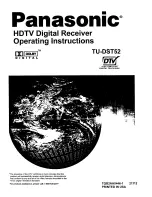
Your Icom radio generates RF electromag-
netic energy during transmit mode. This
radio is designed for and classified as
“Occupational Use Only”, meaning it must
be used only during the course of employ-
ment by individuals aware of the hazards,
and the ways to minimize such hazards. This radio is
NOT intended for use by the “General Population” in an
uncontrolled environment.
• For compliance with FCC and Industry Canada RF
Exposure Requirements, the transmitter antenna installation
shall comply with the following two conditions:
1. The transmitter antenna gain shall not exceed 0 dBi.
2. IC-F121S:
The transmitter antenna is required to be located outside
of a vehicle and kept at a separation distance of 65 cen-
timeters or more between the transmitter antenna of this
device and persons during operation.
3. IC-F221S:
The transmitter antenna is required to be located outside
of a vehicle and kept at a separation distance of 52 cen-
timeters or more between the transmitter antenna of this
device and persons during operation.
To ensure that your exposure to RF elec-
tromagnetic energy is within the FCC
allowable limits for occupational use,
always adhere to the following guidelines:
•
DO NOT
operate the radio without a proper antenna
attached, as this may damage the radio and may also cause
you to exceed FCC RF exposure limits. A proper antenna is
the antenna supplied with this radio by the manufacturer or
an antenna specifically authorized by the manufacturer for
use with this radio.
•
DO NOT
transmit for more than 50% of total radio use time
(“50% duty cycle”). Transmitting more than 50% of the time
can cause FCC RF exposure compliance requirements to
be exceeded. The radio is transmitting when the “TX indica-
tor” lights red. You can cause the radio to transmit by press-
ing the “PTT” switch.
Electromagnetic Interference/Compatibility
During transmissions, your Icom radio generates RF energy
that can possibly cause interference with other devices or
systems. To avoid such interference, turn off the radio in
areas where signs are posted to do so.
DO NOT
operate the
transmitter in areas that are sensitive to electromagnetic radi-
ation such as hospitals, aircraft, and blasting sites.
W AR N IN G
C AU TIO N
5
SAFETY TRAINING INFORMATION
15
IC-F111S_F121S_F211S_F221S 02.10.3 11:54 AM Page 15 (1,1)
Summary of Contents for IC-F111S
Page 1: ......
Page 16: ...sys d the fuse n the aged with a ne or sur...
Page 17: ...14 4 OPTIONS...
Page 19: ...MEMO...
Page 20: ...1 1 32 Kamiminami Hirano ku Osaka 547 0003 Japan...



































